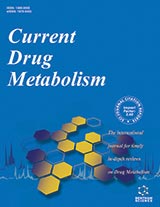摘要
背景:前列腺癌是一种在男性生殖系统中的腺体前列腺中的异常细胞生长的疾病。虽然老年人和家族病史被认为是前列腺癌的危险因素,但这种癌症的病因仍不清楚。目前,前列腺癌是所有人种男性癌症死亡的主要原因之一。 方法:在这篇综述中,我们首先探讨病毒感染对前列腺癌的影响,随后总结在过去的几年里溶瘤病毒治疗前列腺癌的发展。 结果:越来越多的证据表明,各种病毒感染是可能导致前列腺癌的发病机制。现有的研究提供了强有力的证据,至少有两个病毒(RXMV,HPV)将可以导致前列腺变为肿瘤,而且会影响恶性前列腺癌患者生活质量。传统的治疗方法包括化疗和放疗不能区分癌细胞和正常细胞,这是一个严重的缺点,将会增加前列腺癌患者在治疗过程中的毒性反应。到目前为止,很少有其他方法可用于治疗晚期前列腺癌患者。溶瘤病毒可以通过病毒复制和细胞毒性蛋白的表达对基因改造诱导癌细胞裂解。 结论:病毒治疗正在发展成为癌症的新疗法,它采用亲瘤的和溶瘤的病毒通过自己的能力找到并破坏体内肿瘤细胞。溶瘤病毒是一种相对较新的抗肿瘤免疫治疗药物,对溶瘤病毒使用治疗前列腺癌的道路仍然有一些障碍。
关键词: 前列腺癌,病毒,基因突变,病毒治疗,溶瘤病毒,亲瘤病毒。
图形摘要
Current Cancer Drug Targets
Title:Virus, Oncolytic Virus and Human Prostate Cancer
Volume: 17 Issue: 6
关键词: 前列腺癌,病毒,基因突变,病毒治疗,溶瘤病毒,亲瘤病毒。
摘要: Background: Prostate cancer (PCa), a disease, is characterized by abnormal cell growth in the prostate - a gland in the male reproductive system. Although older age and a family history of the disease have been recognized as the risk factors of PCa, the cause of this cancer remains unclear. Currently, PCa is one of the leading causes of cancer death among men of all races.
Method: In this review study, we first discuss the controversy of the contribution of virus infection to PCa, and subsequently summarize the development of oncolytic virotherapy for PCa in the past several years. Results: Mounting evidence suggests that infections with various viruses are causally linked to PCa pathogenesis. Published studies have provided strong evidence that at least two viruses (RXMV and HPV) contribute to prostate tumourigenicity and impact on the survival of patients with malignant PCa. Traditional therapies including chemotherapy and radiotherapy are unable to distinguish cancer cells from normal cells, which are a significant drawback and leads to toxicities for PCa patients undergoing treatment. So far, few other options are available for treating patients with advanced PCa. For PCa treatment, oncolytic virotherapy appears to be much more attractive, which uses live viruses to selectively kill cancer cells. Oncolytic viruses can be genetically engineered to induce cancer cell lysis through virus replication and expression of cytotoxic proteins. Conclusion: Virotherapy is being developed to be a novel therapy for cancers, which uses oncotropic and oncolytic viruses with their abilities to find and destroy malignant cells in the body. As oncolytic viruses are a relatively new class of anti-cancer immunotherapy agents, several important barriers still exist on the road to the use of oncolytic viruses for PCa therapy.Export Options
About this article
Cite this article as:
Virus, Oncolytic Virus and Human Prostate Cancer, Current Cancer Drug Targets 2017; 17 (6) . https://dx.doi.org/10.2174/1568009616666161216095308
| DOI https://dx.doi.org/10.2174/1568009616666161216095308 |
Print ISSN 1568-0096 |
| Publisher Name Bentham Science Publisher |
Online ISSN 1873-5576 |
 76
76 6
6
- Author Guidelines
- Graphical Abstracts
- Fabricating and Stating False Information
- Research Misconduct
- Post Publication Discussions and Corrections
- Publishing Ethics and Rectitude
- Increase Visibility of Your Article
- Archiving Policies
- Peer Review Workflow
- Order Your Article Before Print
- Promote Your Article
- Manuscript Transfer Facility
- Editorial Policies
- Allegations from Whistleblowers
Related Articles
-
Selected Approaches for Rational Drug Design and High Throughput Screening to Identify Anti-Cancer Molecules
Anti-Cancer Agents in Medicinal Chemistry Gastrin-Releasing Peptide Receptor as a Molecular Target for Psychiatric and Neurological Disorders
CNS & Neurological Disorders - Drug Targets Potentials of Polymeric Nanoparticle as Drug Carrier for Cancer Therapy: With a Special Reference to Pharmacokinetic Parameters
Current Drug Metabolism <i>Momordica balsamina L</i>.: An Appraisal on Morphology, Ecological Diversity, Phytochemistry, Pharmacological and Biotechnological Applications
Current Traditional Medicine Malignant Mesothelioma Resistance to Apoptosis: Recent Discoveries and their Implication for Effective Therapeutic Strategies
Current Medicinal Chemistry Endothelin Receptor Antagonists: A New Therapeutic Option for Improving the Outcome after Solid Organ Transplantation?
Current Vascular Pharmacology “Click Chemistry” for Molecular Imaging
Current Molecular Imaging (Discontinued) Respiratory Failure in Cancer Patients: Non-Infectious Complications of Antineoplastic Agents for Solid Tumors
Current Respiratory Medicine Reviews Bisphosphonates as Treatment of Bone Metastases
Current Pharmaceutical Design Pancreatic Cancer and Personalized Medicine: Can Genomics Facilitate Early Diagnosis or Improve Therapeutic Outcomes?
Current Pharmacogenomics and Personalized Medicine The Development of Epigenetics and Related Inhibitors for Targeted Drug Design in Cancer Therapy
Current Topics in Medicinal Chemistry Ribozymes in the Age of Molecular Therapeutics
Current Molecular Medicine Systemic Therapeutic Gene Delivery for Cancer: Crafting Paris Arrow
Current Gene Therapy Near Infrared Receptor-Targeted Nanoprobes for Early Diagnosis of Cancers
Current Medicinal Chemistry The Role of Androgen Receptor Mutations in Prostate Cancer Progression
Current Genomics Protective Effects of Curcumin against Iron-induced Toxicity
Current Pharmaceutical Biotechnology Non-viral Gene Delivery and Therapeutics Targeting to Brain
Current Nanoscience [6]-gingerol as a Cancer Chemopreventive Agent: A Review of Its Activity on Different Steps of the Metastatic Process
Mini-Reviews in Medicinal Chemistry KCa3.1 Channels and Glioblastoma: In Vitro Studies
Current Neuropharmacology Anionic Antimicrobial Peptides from Eukaryotic Organisms
Current Protein & Peptide Science


























